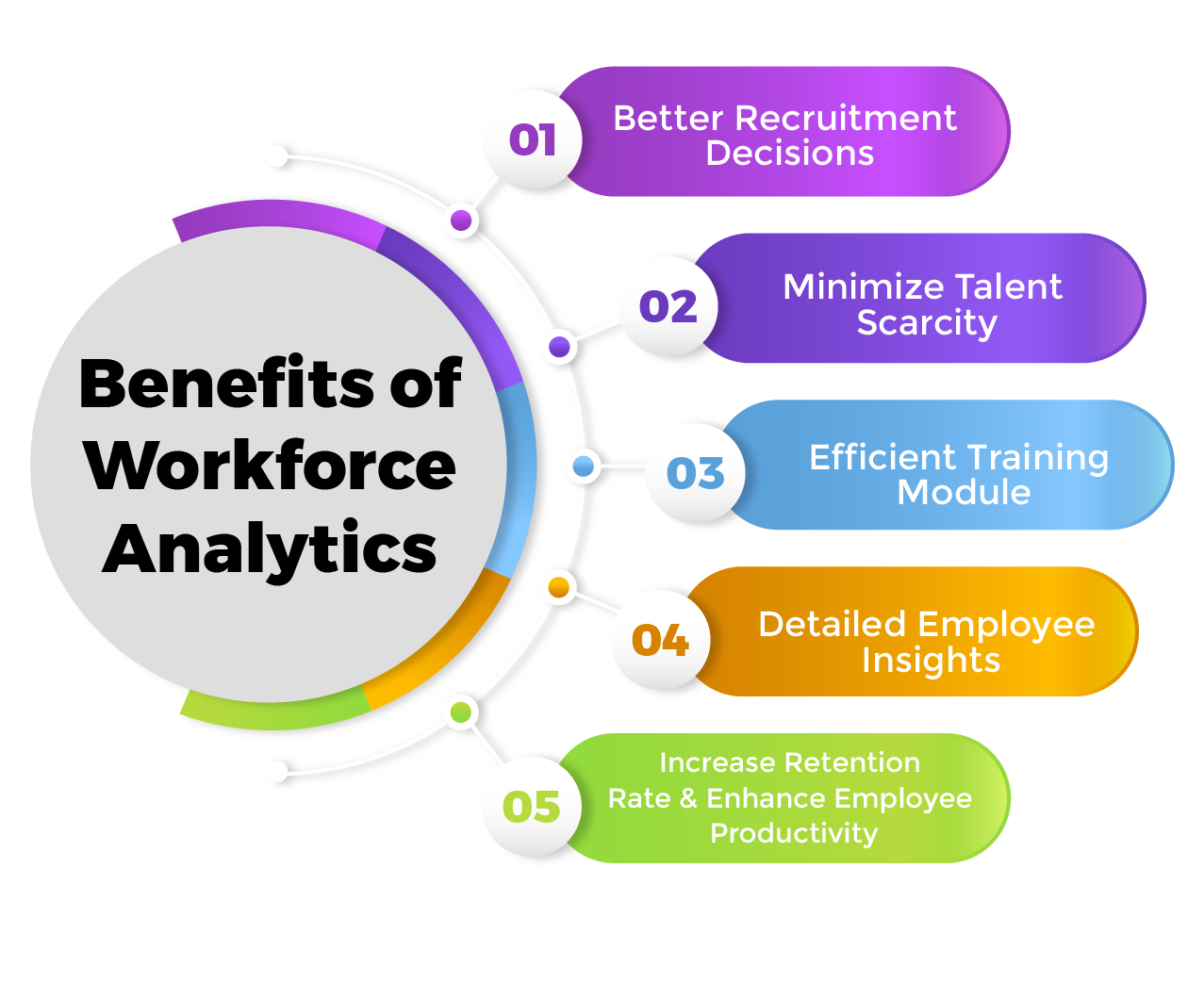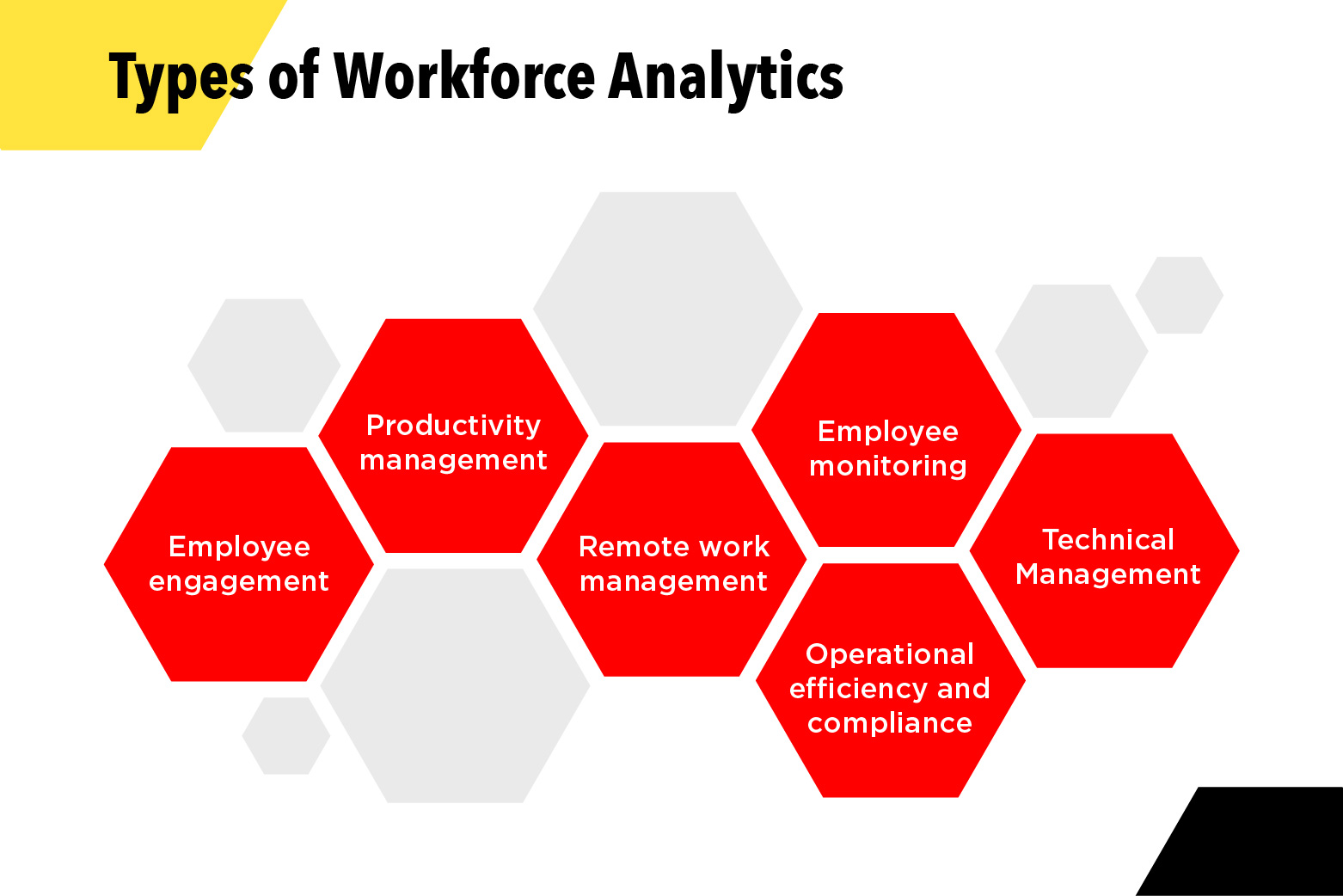
HR Manager
Workforce analytics is a method of monitoring and investigating employee work productivity to improve workflow. This practice measures the impact of employee behavior and related factors on the company’s overall performance. Recruitment, staffing, training, and development, human resources, compensation and benefits, time to fill, cost per hire, onboarding rate, retention rate, add-on rate, replacement rate, time to start, and offer acceptance rate.
What Does Workforce Analytics Measure?
- Employee Productivity: Closely monitor individual and team productivity by measuring key factors such as employee hours worked, training hours, and skill level.
- Employee Engagement: Employee engagement is more committed to team goals and company mission. Workforce Analytics tracks key engagement metrics such as work-life balance, professional milestones, employee satisfaction, and turnover.
- Organizational Adaptability: Tracking and analyzing metrics such as work style and organizational hierarchy can help measure an organization’s ability to adapt to changing market conditions.
Benefits of Workforce Analytics
Tracking your performance and other analytics is the first step to achieving and improving your goals. What are the benefits of Workforce Analytics? It includes the ability to improve:

- Anticipate and prioritize hiring needs
- Scheduling optimization
- discover work inefficiencies
- Monitor employee engagement
- Identify staffing issues
- Build high-performing teams
- Bridging the skill and knowledge gap
- Improve onboarding and offboarding processes
- Improve employee retention
- reduce absenteeism and turnover
- Design an efficient workflow
- manage costs
- Manage and mitigate compliance risk
- improve personal performance
- Measure employee happiness
- Increase Employer Brand Value
- Compare with companies of similar size
Types of Workforce Analytics
Workforce analytics provides insight into various areas and allows the user to focus on one or more of her goals within the organization.

Employee engagement
Improving employee engagement with people analytics allows managers to identify burnout and terminated employees by looking at focus and productivity markers. This visibility enables precise attention to avoid attrition while increasing engagement for individualized coaching, training opportunities, or the organization as a whole.
Productivity management
“Productivity” can mean different things to different leaders in complex business environments. Measuring and managing these different definitions can be complicated. Human resource analytics software for productivity management should allow for multiple interpretations and enable organizations to simultaneously optimize their productivity potential through people, processes, and technology.
Remote work management
Understanding how remote teams are getting their work done is especially difficult because visibility is a barrier. With Workforce Analytics, remote teams can experience improved asynchronous workflows, discover compliance gaps through offsite access, and gain insights into distributed team productivity.
Employee monitoring
Real employee monitoring software looks at the details of what your employees are doing. Workforce Analytics advances employee monitoring to focus on productivity outcomes. Managers and leaders can understand when and how work is done to foster a culture of continuous improvement.
Operational efficiency and compliance
Workforce analysis can reveal operational inefficiencies and compliance issues across an organization. With views of workload balance, resource utilization, time management, and compliance with internal policies, the efficiency gains from workforce analytics are limitless.
Technical Management
Understanding how technology adoption, inconsistencies, and adoption across an organization impact productivity goals is a challenge for all organizations. By using technology management workforce analytics to uncover these trends, managers can see which applications are helping and which are hurting.
What are the key metrics that Workforce Analytics should track?
- Employee Productivity – We are still talking about a 9-5 day workday, but the current reality for many employees is that their working hours tend to be more flexible and variable. As a result, measuring productivity in hours worked is no longer entirely accurate. Instead, create a productivity metric that includes several different data points to get a better picture of how your employees are doing.
- Early turnover – Another important area often ignored when measuring satisfaction is how quickly employees leave. High early turnover indicates that things are not working, both in terms of meeting expectations and employee satisfaction.
- Engagement – This may seem redundant, but engaged employees are more likely to be productive. Engagement measurements include tracking employee satisfaction, stress levels, and employee beliefs about company ideals. High engagement is a good sign that HR is doing its job.
Workforce Analytics is the backbone of a company’s management system and is of great benefit to the company. Implementing workforce analytics in your company will improve your company’s future prospects and bring you more profits.
For more Updates
Website – www.shrofile.com
Facebook page – https://www.facebook.com/shrofile/
Twitter page – https://twitter.com/shrofile
Linkedin Page – https://www.linkedin.com/company/shrofile/
YouTube Page – https://www.youtube.com/channel/UChVfJqpTjx1dHJ2xq_dMtAw
Instagram Page – https://www.instagram.com/Shrofile/




